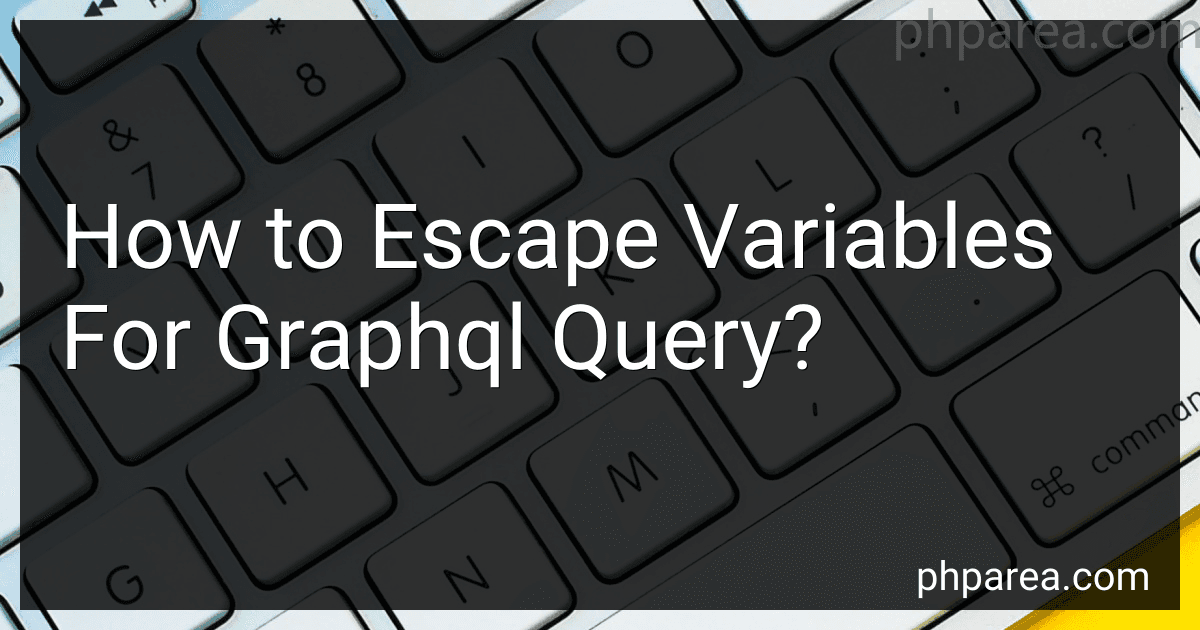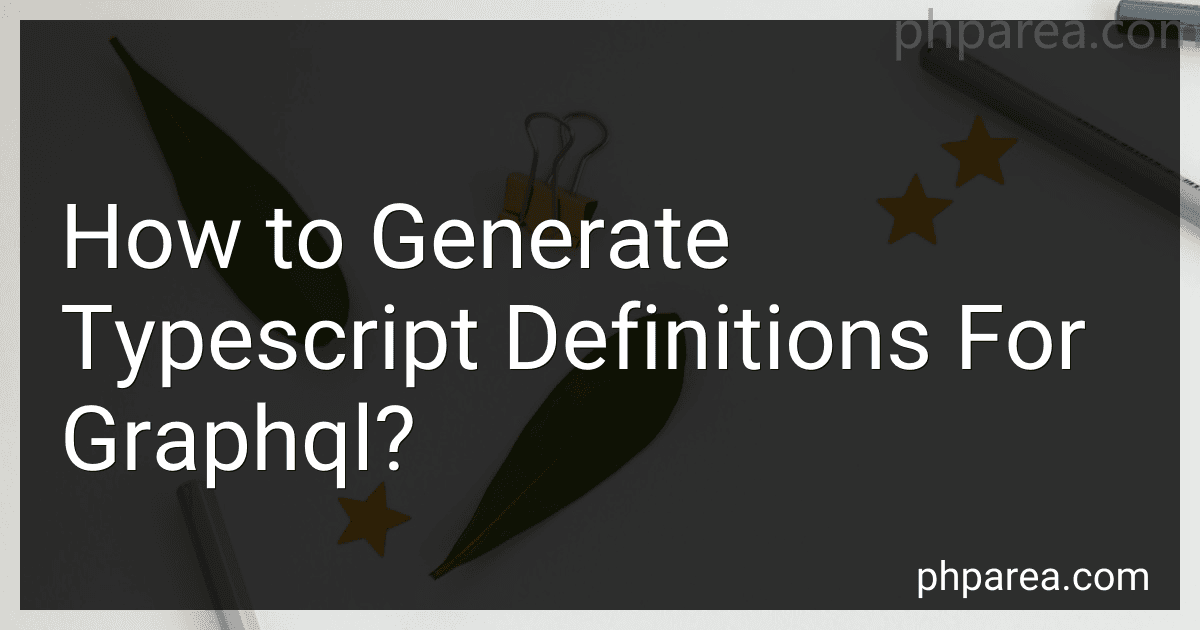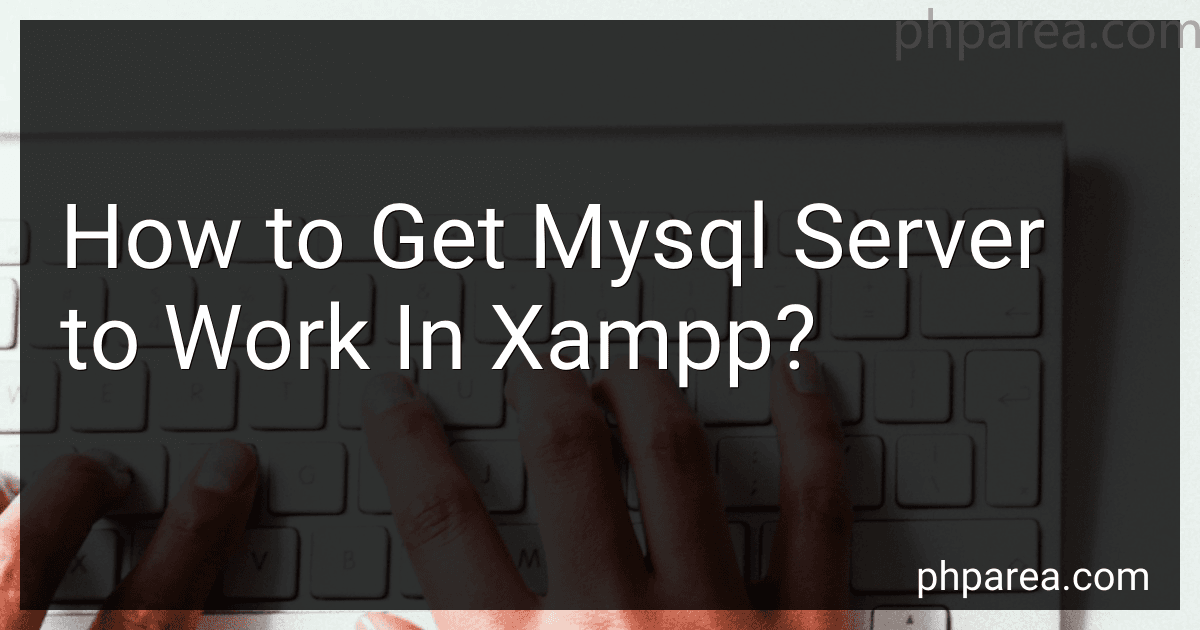Posts (page 51)
-
 6 min readTo create a delete mutation in GraphQL, you need to follow these steps:Define a new type for the delete input, which typically includes an ID field representing the entity to be deleted.Create a new mutation in your schema definition with a name that reflects the action being performed (e.g., "deleteEntity").Add arguments to the delete mutation that correspond to the input fields defined in step 1.Implement the resolver function for the delete mutation in your server code.
6 min readTo create a delete mutation in GraphQL, you need to follow these steps:Define a new type for the delete input, which typically includes an ID field representing the entity to be deleted.Create a new mutation in your schema definition with a name that reflects the action being performed (e.g., "deleteEntity").Add arguments to the delete mutation that correspond to the input fields defined in step 1.Implement the resolver function for the delete mutation in your server code.
-
 8 min readTo connect MongoDB with GraphQL without using Mongoose, you can utilize the MongoDB Node.js driver along with a GraphQL server like Apollo Server or GraphQL Yoga.First, you would need to establish a connection to your MongoDB database using the MongoDB Node.js driver. You can create a new instance of MongoClient and use the connect method to connect to your database.Once your connection is established, you can define your GraphQL schema using the type definitions and resolvers.
8 min readTo connect MongoDB with GraphQL without using Mongoose, you can utilize the MongoDB Node.js driver along with a GraphQL server like Apollo Server or GraphQL Yoga.First, you would need to establish a connection to your MongoDB database using the MongoDB Node.js driver. You can create a new instance of MongoClient and use the connect method to connect to your database.Once your connection is established, you can define your GraphQL schema using the type definitions and resolvers.
-
 7 min readOne way to reduce the number of requests with GraphQL mutations is to batch multiple operations together into a single request. By combining multiple mutation operations into one request, you can reduce the overall number of requests made to the server. Additionally, you can make use of GraphQL's powerful query language to fetch only the data that is needed for each mutation, reducing the amount of unnecessary data being sent back and forth between the client and server.
7 min readOne way to reduce the number of requests with GraphQL mutations is to batch multiple operations together into a single request. By combining multiple mutation operations into one request, you can reduce the overall number of requests made to the server. Additionally, you can make use of GraphQL's powerful query language to fetch only the data that is needed for each mutation, reducing the amount of unnecessary data being sent back and forth between the client and server.
-
 6 min readIn GraphQL, escaping variables is not necessary as the query parameters are passed separately from the query itself. This separation allows for the variables to be sent as separate arguments, rather than being concatenated directly into the query string. This helps prevent injection attacks and other security vulnerabilities that can arise from improperly escaping user input.When sending a GraphQL query with variables, the variables are typically passed as a separate JSON object.
6 min readIn GraphQL, escaping variables is not necessary as the query parameters are passed separately from the query itself. This separation allows for the variables to be sent as separate arguments, rather than being concatenated directly into the query string. This helps prevent injection attacks and other security vulnerabilities that can arise from improperly escaping user input.When sending a GraphQL query with variables, the variables are typically passed as a separate JSON object.
-
 6 min readOne of the key benefits of using GraphQL is its ability to significantly improve the efficiency of data fetching in web and mobile applications. Unlike traditional REST APIs, which often require multiple requests to different endpoints to fetch all the necessary data, GraphQL allows clients to specify exactly what data they need in a single request. This results in reduced network traffic, faster response times, and a more streamlined development process.
6 min readOne of the key benefits of using GraphQL is its ability to significantly improve the efficiency of data fetching in web and mobile applications. Unlike traditional REST APIs, which often require multiple requests to different endpoints to fetch all the necessary data, GraphQL allows clients to specify exactly what data they need in a single request. This results in reduced network traffic, faster response times, and a more streamlined development process.
-
 5 min readGraphQL can be used without React.js by making direct HTTP requests to the GraphQL server. This can be done using tools like cURL, Postman, or any other HTTP client.To make a GraphQL request, you need to send a POST request to the GraphQL endpoint with a JSON body containing the query or mutation you want to execute. The server will then respond with the data requested in the query.It is important to note that using GraphQL without React.
5 min readGraphQL can be used without React.js by making direct HTTP requests to the GraphQL server. This can be done using tools like cURL, Postman, or any other HTTP client.To make a GraphQL request, you need to send a POST request to the GraphQL endpoint with a JSON body containing the query or mutation you want to execute. The server will then respond with the data requested in the query.It is important to note that using GraphQL without React.
-
 4 min readTo generate TypeScript definitions for GraphQL, you can use tools like graphql-codegen or graphql-typegen. These tools allow you to specify your GraphQL schema and generate TypeScript types based on your queries and mutations. This can help ensure type safety and improve developer productivity when working with GraphQL in TypeScript projects. By running these tools, you can automatically generate reusable types for your GraphQL operations, reducing manual work and potential errors in your code.
4 min readTo generate TypeScript definitions for GraphQL, you can use tools like graphql-codegen or graphql-typegen. These tools allow you to specify your GraphQL schema and generate TypeScript types based on your queries and mutations. This can help ensure type safety and improve developer productivity when working with GraphQL in TypeScript projects. By running these tools, you can automatically generate reusable types for your GraphQL operations, reducing manual work and potential errors in your code.
-
 6 min readWhen writing resolvers for GraphQL mutation fields, you will need to define a function that takes in four parameters: parent, args, context, and info. The parent parameter will contain the result of any previous resolvers in the query, the args parameter will contain the arguments passed in the mutation, the context parameter will contain any shared data or functions needed for handling the mutation, and the info parameter will contain information about the execution of the query.
6 min readWhen writing resolvers for GraphQL mutation fields, you will need to define a function that takes in four parameters: parent, args, context, and info. The parent parameter will contain the result of any previous resolvers in the query, the args parameter will contain the arguments passed in the mutation, the context parameter will contain any shared data or functions needed for handling the mutation, and the info parameter will contain information about the execution of the query.
-
 6 min readTo get a user by their username in GraphQL, you can create a query that accepts the username as a parameter. Within this query, you can use the user field to fetch the user based on their username. You may need to create a resolver function that maps the username parameter to the corresponding user in your data source. By executing this query with the desired username as an argument, you can retrieve the user information associated with that username.
6 min readTo get a user by their username in GraphQL, you can create a query that accepts the username as a parameter. Within this query, you can use the user field to fetch the user based on their username. You may need to create a resolver function that maps the username parameter to the corresponding user in your data source. By executing this query with the desired username as an argument, you can retrieve the user information associated with that username.
-
 5 min readIn GraphQL, variables can be used to pass dynamic values to a query. This allows us to write reusable queries that can accept different input values.To use variables in a GraphQL query, we need to define the variables in the query itself. This is done by adding a "variable definition" block at the beginning of the query, where we specify the name of the variable and its type.In the query itself, we can then reference the variable using the "$" sign followed by the variable name.
5 min readIn GraphQL, variables can be used to pass dynamic values to a query. This allows us to write reusable queries that can accept different input values.To use variables in a GraphQL query, we need to define the variables in the query itself. This is done by adding a "variable definition" block at the beginning of the query, where we specify the name of the variable and its type.In the query itself, we can then reference the variable using the "$" sign followed by the variable name.
-
 5 min readTo get MySQL server to work in XAMPP, you first need to ensure that XAMPP is properly installed on your system. Once XAMPP is installed, open the XAMPP Control Panel and start the Apache and MySQL services.If MySQL does not start or if you encounter any issues, you can troubleshoot by checking the MySQL error log for more information. The error log can typically be found in the "logs" folder within your XAMPP installation directory.
5 min readTo get MySQL server to work in XAMPP, you first need to ensure that XAMPP is properly installed on your system. Once XAMPP is installed, open the XAMPP Control Panel and start the Apache and MySQL services.If MySQL does not start or if you encounter any issues, you can troubleshoot by checking the MySQL error log for more information. The error log can typically be found in the "logs" folder within your XAMPP installation directory.
-
 6 min readIn GraphQL, dealing with null values in a schema involves defining fields as optional or non-nullable. By default, all fields in a schema are nullable, meaning they can return a null value. To make a field non-nullable, you can add an exclamation mark after the field type declaration in the schema definition. This ensures that the field will always return a non-null value when queried.
6 min readIn GraphQL, dealing with null values in a schema involves defining fields as optional or non-nullable. By default, all fields in a schema are nullable, meaning they can return a null value. To make a field non-nullable, you can add an exclamation mark after the field type declaration in the schema definition. This ensures that the field will always return a non-null value when queried.